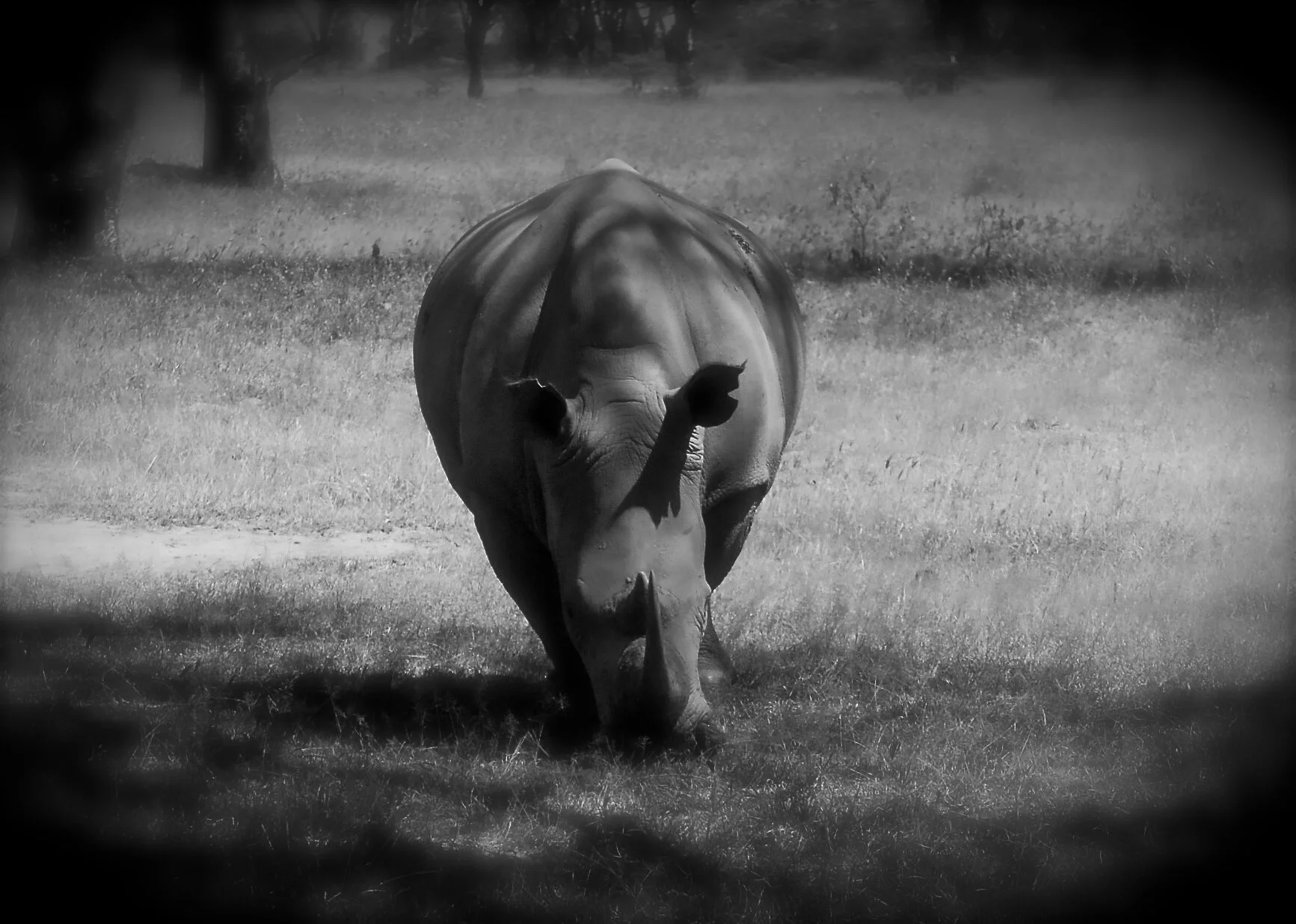“These magnificent species of Africa — elephants, rhino, lions, leopards, cheetah, the great apes — this is a treasure for all humanity, and they are not for sale. They are not for trade. They need to be valued and preserved by humanity. We need a global commitment to that.”
Curious fact: The collective noun for a group of rhinos is a “crash” of rhinos.
I don’t believe that for a second, mind you, but that’s what the excellent research assistants at Google tell us. Perhaps that should be a factoid rather than a fact, or even fake news, but either way, it’s worth noting.
It’s World Rhino Day today, and the word “crash” is worth picking up on if for no other reason than rhino numbers have crashed — figuratively, if not literally — since industrialization and colonization of Africa by Western powers.
Here’s what we are losing should rhinos go the way of the mastodon, another apex mammal that no one in its day could have imagined might vanish from the face of the Earth.
Since it’s evident to anyone with a working brain why rhinos are in trouble, I’ve decided to acknowledge rhinos’ existence by sharing some curious facts — or factoids, if you prefer — about the rhino’s unique place in the ecosystem.
The climate marchers the other day probably know more about rhinos than many of the world leaders who claim to represent them do. They certainly care more. This is one generation gap where knowledge favours the young.
There are five species of rhino, the endangered white and black (found in Africa) and critically endangered if not already extinct Indian, Javan and Sumatran, found, oddly enough in India, Java and Sumatra, where they are to be found at all.
The white rhino is not white but a kind of slate grey, or brown, depending on the last thing it was rolling in — the word “white” is an Afrikaans bastardization of the word “wide,” for its wide nose and snout. Now you know.
Similarly, the black rhino is not really black; a more apt name, sometimes used, is the hook-lipped rhino, for obvious reasons to anyone who has seen one.
Rhinos have good hearing and an uncanny sense of smell, but poor eyesight. This can make them suspicious and paranoid, and they tend to charge anything they don’t quite understand or perceive as a possible threat.
All rhinos are endangered; the black rhino is under particular threat. Black rhinos are browsers, and favour twigs and leaves. White rhinos are grazers, and prefer grass. Black rhinos tend to be temperamental, short-tempered and quick to take offence to just about anything; white rhinos,
though not exactly housetrained, tend to be more sedate and circumspect about their lot in life.
Rhino horn is valued in the usual places by the usual suspects, for everything from its supposed aphrodisiac properties to its use as a cure in traditional medicine. It’s all bunk — rhino horn is made from keratin, the same organic substance human fingernails are made of, but the international crime syndicates have found a way to make money from it.
The sheer unfettered stupidity and ignorance of some cultures would be enraging if it weren’t so sad: Just about everyone, except a handful of world leaders, will admit the Earth is a better place with rhinos than without them.
Rhinos enjoy wallowing, especially in mud. The dirtier and wetter the mud, the better. The mud dries on their skin and protects it from the harsh equatorial sun, hence the phrase, “a skin as thick as rhino hide.” Rhinos like to rub their bodies against inanimate objects, such as rocks and trees, to rid their bodies of parasites such as ticks, which get stuck in the dried mud on their skin. That’s why tick birds — the clue is in the name — can often be found on a rhino’s back, or around its head and ears. Rhinos instinctively understand the tick bird, or oxpecker, is not a pest but a friend. The bird, for its part, is grateful for the occasional snack and mindful that it can relax and eat without having to worry about being nailed by a snake or a large raptor.
A rhinos’ gestation period lasts roughly 15 months, after which time it will give birth to a single calf. (Twins are virtually unheard of.) Young rhinos remain with their mothers until they are two- or three-years-old.
You don’t need an advanced degree in mathematics — just a cognitive function slightly higher than that of Donald J. Trump — to realize that these numbers weigh against rhinos’ chances of long-term survival: A low birth rate, coupled with the extended period of parenting before the calf is old enough to be able to look after itself, lessens the odds for a long and prosperous life, even at the best of times.
And these are not the best of times.
Rhinos live roughly 40 to 50 years. There are some 5,000 black rhinos left, if that.
Perhaps, by the next World Rhino Day, their numbers will improve. That’s one New Year’s resolution we can — and should — get behind.



